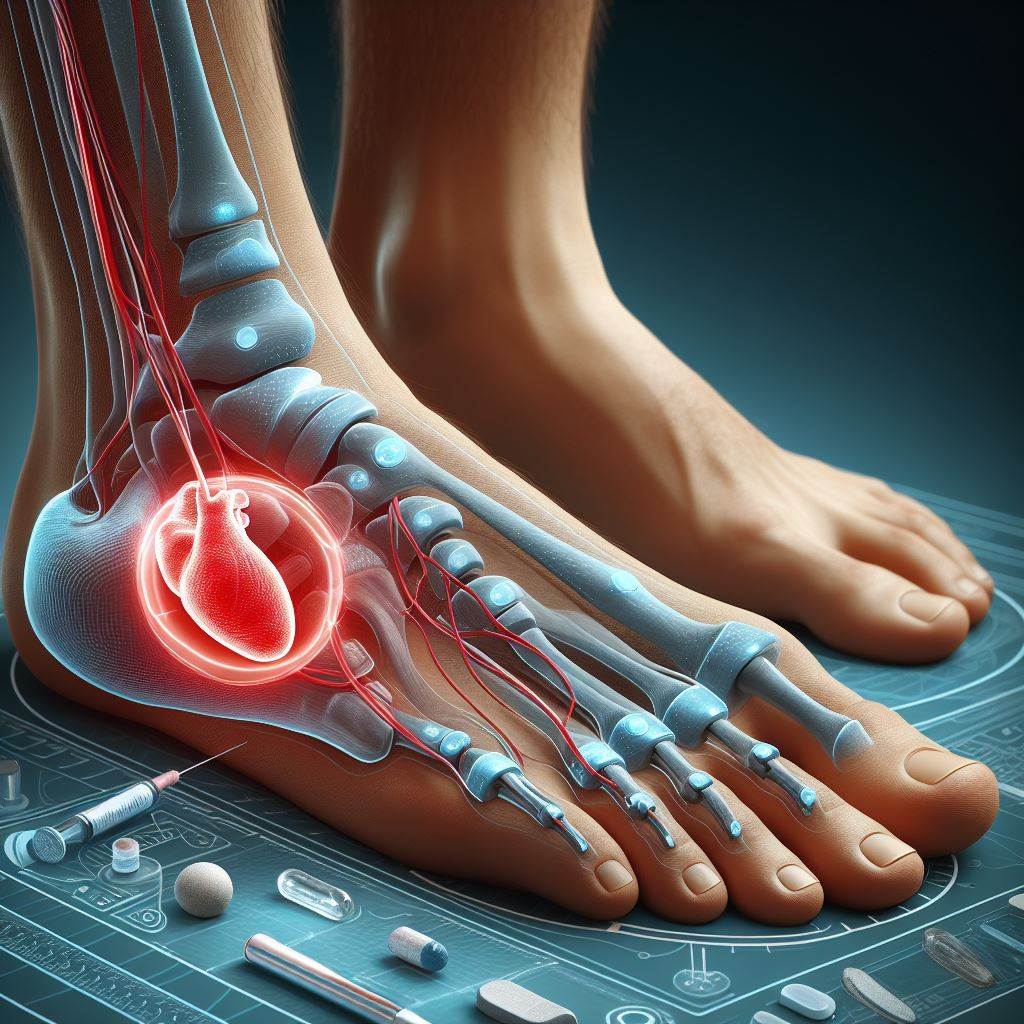Advancements in Diabetic Foot Ulcer Prevention Technology

Diabetes is a widespread health concern affecting millions of people worldwide. Among its various complications, diabetic foot ulcers stand out as a significant threat to health and quality of life. These ulcers, which can develop when high blood sugar levels damage nerves and blood vessels in the feet, often lead to serious infections and, in severe cases, amputations. Despite advancements in diabetes management, the prevalence of foot ulcers remains alarmingly high, underscoring the urgent need for innovative preventive measures.
In recent years, researchers have been exploring novel approaches to reduce the risk of diabetic foot ulcers, with a particular focus on footwear interventions. Traditional shoe insoles, aimed at providing cushioning and support, have long been used to alleviate pressure on the feet and reduce the risk of ulcers. However, these conventional insoles have limitations, as they often fail to address the underlying biomechanical factors contributing to ulcer formation.
Enter the latest breakthrough in insole technology: the pressure-alternating shoe insole. Developed by researchers at The University of Texas at Arlington Research Institute, this innovative insole employs a cyclic pressure relief mechanism to mitigate the risk of diabetic foot ulcers. Unlike conventional insoles, which provide static support, the pressure-alternating insole dynamically adjusts pressure distribution across different areas of the foot during walking.
Muthu B J Wijesundara, principal research scientist and lead developer of the pressure-alternating insole, explains the rationale behind this innovative approach. “Diabetic foot ulcers often develop due to repetitive stress and pressure on vulnerable areas of the foot,” says Wijesundara. “By creating a shoe insole that alternates pressure, we aim to provide intermittent periods of relief to the soft tissues, thereby reducing the likelihood of ulcer formation.”
The cyclic pressure relief mechanism embedded within the insole works by periodically redistributing pressure away from high-risk areas of the foot. This not only reduces the mechanical stress exerted on the skin and underlying tissues but also promotes blood circulation, crucial for maintaining tissue health and integrity. By incorporating this dynamic pressure-alternating feature, the insole aims to address one of the primary contributors to diabetic foot ulcer development: repetitive mechanical trauma.
The potential impact of this innovative technology on diabetic foot ulcer prevention cannot be overstated. With nearly one in three individuals with diabetes at risk of developing foot ulcers during their lifetime, effective preventive measures are urgently needed to mitigate this growing health burden. The pressure-alternating insole represents a promising advancement in this regard, offering a proactive approach to foot care for individuals with diabetes.
In a study published in the International Journal of Lower Extremity Wounds, researchers evaluated the efficacy of the pressure-alternating insole in reducing plantar pressure and preventing ulcer formation in high-risk individuals. Preliminary findings suggest that the insole effectively reduces pressure on vulnerable areas of the foot, thereby lowering the risk of tissue damage and ulceration.
The implications of these findings extend beyond the realm of diabetic foot care. By addressing the biomechanical factors underlying ulcer formation, the pressure-alternating insole holds promise for improving overall foot health and mobility in individuals with diabetes. Moreover, its potential to reduce the incidence of foot ulcers could lead to significant cost savings in healthcare expenditures associated with ulcer treatment and management.
Also Read: Diabetes Drug Offers Promise for Parkinson’s Management
As research in this field continues to evolve, there is growing optimism surrounding the role of innovative technologies in diabetic foot ulcer prevention. With further refinement and validation, the pressure-alternating insole has the potential to become a standard component of diabetic foot care protocols, enhancing the quality of life for individuals living with diabetes and reducing the burden of associated complications.
Q&A
Q: What are diabetic foot ulcers, and why are they a concern for individuals with diabetes?
A: Diabetic foot ulcers are open sores or wounds that commonly develop on the feet of individuals with diabetes. They occur due to nerve damage and poor blood circulation, which are common complications of diabetes. Foot ulcers can lead to serious infections, amputations, and significant reductions in quality of life.
Q: How prevalent are diabetic foot ulcers, and what factors contribute to their development?
A: Nearly one in three individuals with diabetes will develop foot ulcers during their lifetime. Several factors contribute to their development, including prolonged high blood sugar levels, nerve damage (neuropathy), poor circulation (peripheral artery disease), foot deformities, and repetitive mechanical trauma from walking or footwear.
Q: How does the pressure-alternating shoe insole technology work, and what makes it unique compared to traditional insoles?
A: The pressure-alternating shoe insole employs a cyclic pressure relief mechanism to dynamically adjust pressure distribution across different areas of the foot during walking. Unlike traditional insoles that provide static support, this innovative technology periodically redistributes pressure away from high-risk areas, reducing mechanical stress on the skin and promoting blood circulation. Its dynamic pressure-alternating feature sets it apart by addressing the underlying biomechanical factors contributing to diabetic foot ulcer development.
Q: What evidence supports the effectiveness of the pressure-alternating shoe insole in preventing diabetic foot ulcers?
A: Preliminary studies evaluating the pressure-alternating shoe insole have shown promising results in reducing plantar pressure and lowering the risk of ulcer formation in high-risk individuals with diabetes. These studies suggest that the insole effectively reduces mechanical stress on the feet, thereby mitigating the risk of tissue damage and ulceration.
Also Read: Influence of Sleep on Diabetes Management
Q: How might the widespread adoption of pressure-alternating shoe insole technology impact healthcare outcomes and costs associated with diabetic foot ulcers?
A: The widespread adoption of pressure-alternating shoe insole technology has the potential to significantly improve healthcare outcomes for individuals with diabetes by reducing the incidence of foot ulcers and associated complications. By preventing ulcers from developing, this innovative technology could also lead to substantial cost savings in healthcare expenditures related to ulcer treatment, hospitalizations, and long-term care.







